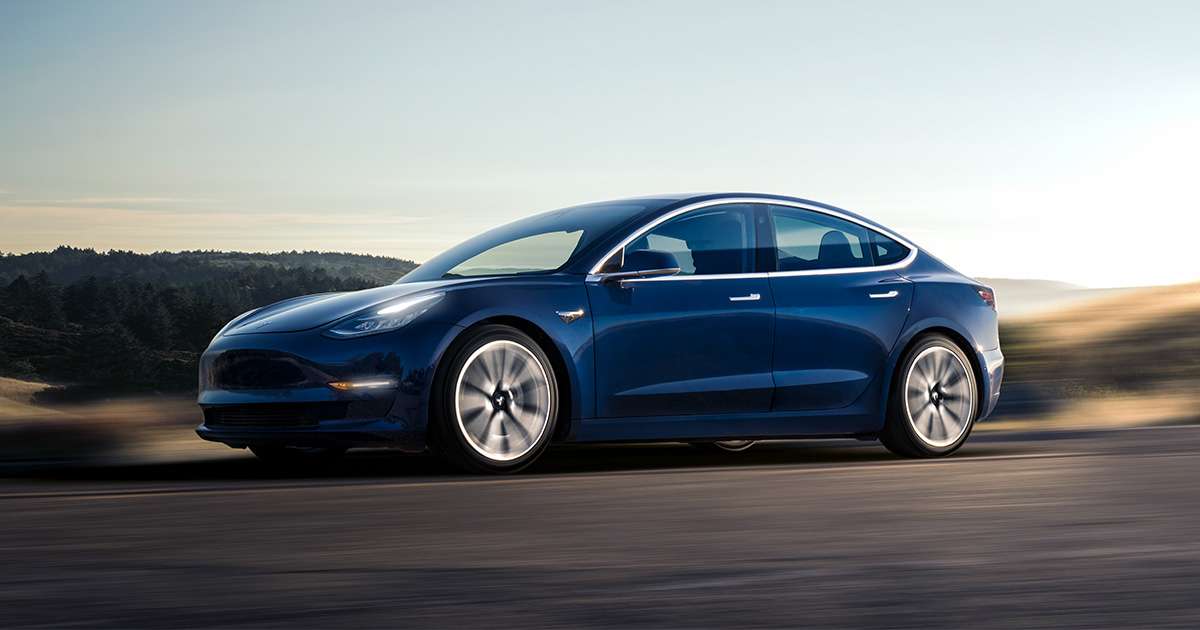Here’s a quick roundup of the most interesting automotive news I’ve come across today:
1. Tesla Model 3 production grinds to a halt [Mashable]:
All eyes are on Model 3 production as Tesla has been lagging behind its production goals for the sedan and CEO Elon Musk has stepped in to oversee the process — even sleeping at the factory to get more cars on the road.For Tesla’s part, the company says the break was planned and is necessary to increase production.But BuzzFeed reported Monday that employees were blindsided by the multi-day shutdown. Employees told the outlet they would have to use vacation days, stay home without pay, or — if lucky — get paid to work somewhere else within Tesla.In a statement Monday, a Tesla spokesperson said like a “planned downtime” on the Model 3 production back in February, this week’s production break is part of an overall plan.”These periods are used to improve automation and systematically address bottlenecks in order to increase production rates with assistance from our robotic process automation, but, this is a while off yet. This is not unusual and is in fact common in production ramps like this,” a spokesperson said.
2. Toyota vehicles will begin talking to each other by 2021–though other companies are making faster progress [Engadget]
Toyota’s first vehicles that communicate with each other will be up for sale in the US starting in 2021. By the mid-2020s, “most” of Toyota and Lexus’ lineup will feature Dedicated Short-Range Communications (DSRC) the company says. Since 2015, the automaker has installed the tech in around 100,000 cars in its native Japan, according toReuters. The automaker pointed toward its automatic emergency braking systems pledge from 2015 as proof of intent. Now, Toyota says 92 percent of its US sales are cars with its Toyota Safety Sense or Lexus Safety Sense braking tech as standard equipment.
Toyota is a bit late on the announcement though. And by the time its chatty rides hit the road, others will have already been deployed for a bit. Volkswagen specifically said its communicative cars will be on the road by 2019. A grid of cars that can talk to each other is something that’s been tossed around for awhile, with the government granting the auto industry a block of spectrum in the 5.9 GHz band specifically for vehicle-to-vehilce (V2V) systems back in 1999. Toyota’s implementation will use seven channels of that for its DSRC tech.
3. In a similar vein, Japanese automakers are way behind on building connected cars [Bloomberg]
In the race to build cars with digitally connected services — such as ordering coffee on the dashboard display — Toyota Motor Corp. and Nissan Motor Co. risk being held back by their home market.
In contrast to vehicle buyers in the U.S. and Europe, Japanese consumers are reluctant to pay for such features. That’s resulted in only 10 percent of cars on Japan’s roads having embedded connectivity, compared with 49 percent in the U.S., 31 percent in Europe, and 20 percent in China, according to consultancy SBD Automotive.
The threat to the Japanese carmakers — which control almost all of their home market and do a major part of their product development there — is that competitors pull ahead as global demand for connected services keeps increasing. Rivals including General Motors Co. are betting on connectivity for new revenue streams as buyers in the U.S., Europe and China embrace on-board shopping, entertainment and customized coupons.
4. Elsewhere in Asia, China is loosening its restrictions on foreign automakers, allowing them to own majority stakes in companies there (which could spell doom for many of China’s homegrown companies) [Bloomberg]
China will let foreign automakers from Volkswagen AG to Ford Motor Co. own more than 50 percent of local ventures, removing a two-decade restriction and giving a boost to global companies seeking to capture a greater share of the world’s largest car market.
Electric-car makers such as Tesla Inc. will see the swiftest benefit, with ownership limitation for such businesses lifting as soon as this year. The cap for commercial vehicles will be eliminated in 2020 and that for passenger vehicles in 2022, the agency that oversees industries said Tuesday.
The move may help diffuse tensions between China and the U.S. after President Donald Trump’s intensified rhetoric risked an all-out trade war. Companies from Daimler AGand BMW AG to General Motors Co. and Toyota Motor Corp. are set to find it easier to manufacture and do business in China, while local makers will be under increased pressure to speed up the building of their own brands….
“In a decade, foreign carmakers will gradually become all independent and Chinese companies will lose the cash flows from the joint ventures,” said Yale Zhang, an analyst with Automotive Foresight Co. in Shanghai. “Foreign carmakers will be happy as they won’t have to share 50 percent of the profits with their Chinese partners.”
